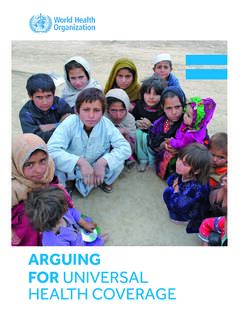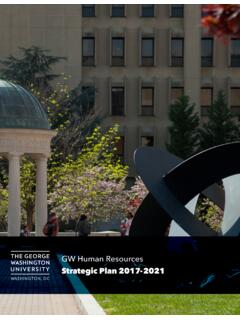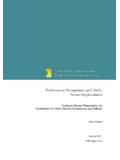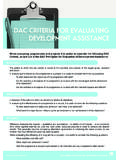Transcription of Operating Theatre Efficiency Guideline and Statewide Key ...
1 Document Number # qh-gdl-443:2017 Operating Theatre Efficiency Guideline Operating Theatre Efficiency Guideline - 2 - Operating Theatre Efficiency Published by the State of Queensland (Queensland Health), January 2017 This document is licensed under a Creative Commons Attribution Australia licence. To view a copy of this licence, visit State of Queensland (Queensland Health) 2017 You are free to copy, communicate and adapt the work, as long as you attribute the State of Queensland (Queensland Health). For more information contact: Healthcare Improvement Unit, Department of Health, GPO Box 48, Brisbane QLD 4001, email phone (07) 3328 An electronic version of this document is available at Disclaimer: The content presented in this publication is distributed by the Queensland Government as an information source only.
2 The State of Queensland makes no statements, representations or warranties about the accuracy, completeness or reliability of any information contained in this publication. The State of Queensland disclaims all responsibility and all liability (including without limitation for liability in negligence for all expenses, losses, damages and costs you might incur as a result of the information being inaccurate or incomplete in any way, and for any reason reliance was placed on such information. Operating Theatre Efficiency Guideline - 3 - Contents 1. Summary .. 4 2. Scope .. 4 3. 5 Purpose .. 5 Understanding Theatre Efficiency .)
3 5 The Whole Patient 5 Defining Utilisation, Efficiency and Productivity .. 7 Operating Theatre Measures and Metrics .. 7 Context .. 7 Using Measures and Metrics .. 8 Description of Measures .. 10 13 Data Quality .. 14 Managing Efficient Operating Theatres .. 15 Operating Theatre Governance .. 15 Roles, Responsibilities and Accountabilities .. 16 Reporting and Monitoring .. 20 Best Practice Standards and Measures of Success .. 21 Theatre Planning .. 21 List Scheduling .. 26 Reducing Variation Green Lists / Service Lists .. 32 Patient-Specific Requirements and Preoperative Assessment .. 33 Starting on Time.
4 34 Changeover .. 36 Finishing on Time .. 38 Standby Lists / Patients .. 40 Minimising Delays .. 42 Cancellations .. 44 Comparative Elective Theatre Utilisation .. 48 Cost per Weighted Activity Unit by Diagnosis Related Group .. 49 Elective Surgery Patients Treated within Clinically Recommended Time by Category .. 49 Managing High Cost Drivers .. 50 4. Aboriginal and Torres Strait Islander Considerations .. 51 5. Abbreviations .. 52 6. References .. 52 7. Appendices .. 53 Appendix A: Theatre Efficiency Measures and Metrics .. 54 Appendix B: Definitions .. 77 Appendix C: Management Committee 80 Operating Theatre Efficiency Guideline - 4 - 1.
5 Summary The Queensland Government s, My health, Queensland s future: Advancing health 2026 strategy describes the challenges faced by public healthcare in Queensland, Our population is ageing. A growing number of Queenslanders live with chronic disease. Better clinical interventions and new technologies offer the prospect of improved health outcomes. But health costs are rising and we need to be smarter about how we deliver healthcare into the future. Further to this and in support of the need to deliver sustainable, efficient and effective services, in April 2016, the Queensland Audit Office (QAO) published the Queensland public hospital Operating Theatre Efficiency report 2015-16.
6 The report concluded that, Public hospitals can substantially improve their Theatre Efficiency , both by increasing utilisation and by better managing their costs of surgery. That more can be done within existing Theatre infrastructure is indicative of the potential cost savings that can be realised in the system. There were ten recommendations made in the report, including the need for the development of standardised definitions, performance measures and targets, improving Operating Theatre governance, reviewing Theatre schedules and staff rosters and improving costing and coding services. The following guidelines have been developed as a best practice guide for Hospital and Health Services (HHSs) to understand and improve Theatre Efficiency , governance and operational management.
7 2. Scope The Guideline applies to all Operating theatres in public hospitals in Queensland, referred to hereafter as Hospital and Health Services (HHSs) including Mater Public Services. Compliance with this Guideline is not mandatory, but sound reasoning must exist for departing from the recommended principles within the Guideline . It is recognised that there are many aspects of Operating Theatre Efficiency and management that are not addressed in version of this document. As future versions of this Guideline are developed over time to stay up to date with best practice, additional influences will be addressed, including; Workforce standards Quality and safety Operating Theatre costing Evidence-based scheduling Emergency surgery Both the Guideline and the associated measures and key performance indicators (KPI s) are developmental documents that will be reviewed and expanded as part of a staged implementation plan.
8 It is important to note that where measures and KPI s have been described, Statewide targets will not be set for the first year of implementation. The approach to establishing targets and benchmarks will follow a progressive, evidence-based approach whereby collection for the first 12 months will focus on assessing relative performance to enable the Department to understand the level of variation. This will ensure appropriate targets are set in the future with the expectation that these will be applied as stepped improvement targets from Year 2 of the implementation plan. Operating Theatre Efficiency Guideline - 5 - 3. Guidelines Purpose The purpose of the Queensland Health Theatre Efficiency Guideline is to provide a best practice guide for operationally managing efficient public hospital Operating theatres by: 1.
9 Providing a minimum suite of agreed upon definitions, performance measures and targets to support Hospital and Health Services and hospitals to manage, benchmark and improve Theatre performance; 2. Clarifying and formally communicating roles, responsibilities and accountabilities for delivering efficient surgical services, both operationally and strategically; 3. Outlining the governance structure ( Theatre Management Committee) by which public hospitals should monitor the efficient use of theatres; and 4. Highlighting the major cost drivers of Operating theatres The primary focus of the document is planned (elective) surgery, though it is expected that some aspects will also be relevant for unplanned (emergency) surgery.
10 Understanding Theatre Efficiency The Whole Patient Journey There are numerous factors within the perioperative setting that influence the Efficiency of Operating theatres. Such factors extend beyond the immediate Theatre environment and include the entire continuum from planning, scheduling, pre-assessment and through to discharge. The following diagram represents the three primary phases of the perioperative setting that contribute to the efficient and productive use of Operating theatres and associated resources. Operating Theatre Efficiency Guideline - 6 - Figure 1 Key Influences within the elective perioperative environment It is imperative that Operating theatres are not seen in isolation.


















